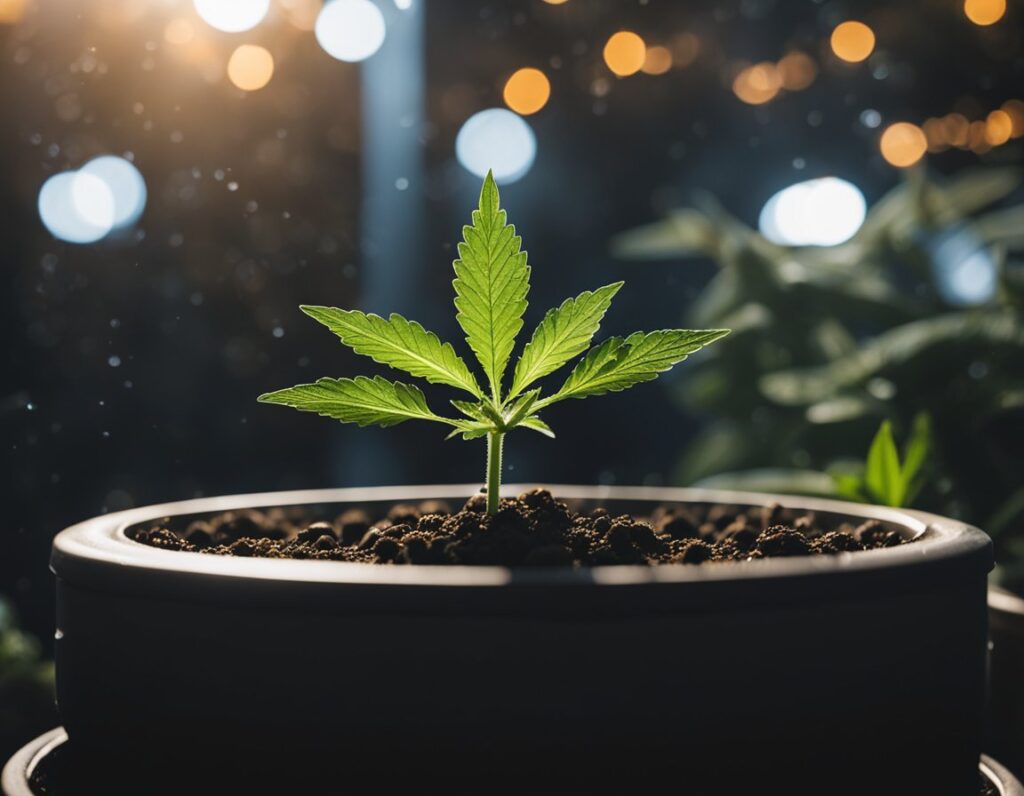
Germinating marijuana seeds effectively involves specific conditions and the right quality of seeds. Temperature, moisture, and the genetics of the seeds significantly influence this process and the eventual health of your plants.
Temperature and moisture are critical for successful germination. Ideal temperature ranges between 20°C to 25°C (68°F to 77°F) promote the best germination rates. At this temperature, seeds can absorb water effectively, leading to quicker sprouting.
Moisture must be consistent; seeds should not be overly wet nor too dry. Using a moist paper towel or cotton wool can help maintain the right humidity. Placing your setup in a dark area ensures that the seeds are shielded from light, which can disturb the germination process. A humid environment encourages a robust taproot, crucial for the seedling’s development.
The viability of your marijuana seeds greatly depends on their quality and genetics. Only high-quality seeds will yield healthy plants. When selecting seeds, look for reputable sources to ensure they are mature and genetically stable. For example, sourcing Marijuana Seeds Vancouver from trusted suppliers ensures better results.
Genetics play a significant role in how well seeds will germinate and subsequently grow. The germination rate can vary significantly between different strains, so understanding the specific genetics can guide your choices. Ensure that the seeds you choose have documented viability rates; this information can often be found on packaging or vendor websites. Investing in quality seeds leads to more reliable results and healthier plants down the line.
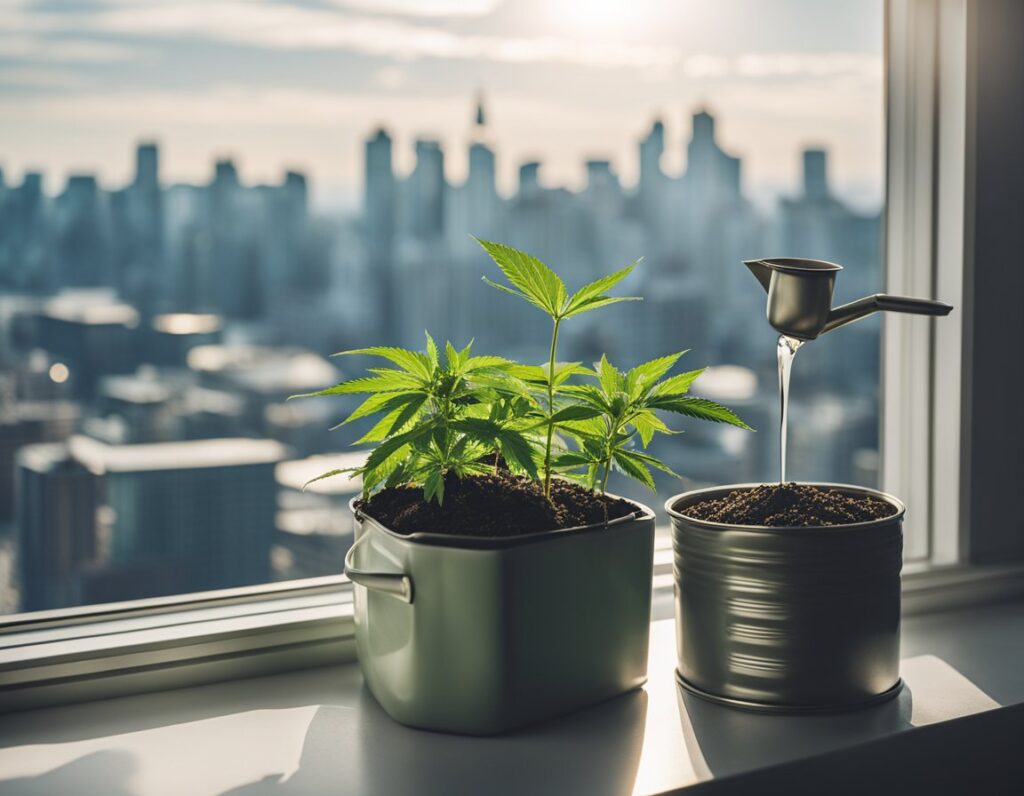
Before you start germinating marijuana seeds, several factors in Vancouver can significantly impact your success. You need to consider the right strains for your environment and ensure compliance with local laws.
Choosing cannabis strains suitable for Vancouver’s climate is essential. Strains that thrive in mild, rainy conditions are ideal. You may want to consider:
Consult local seed banks, such as Farmers Lab Seeds, to find strains that have adapted well to the region. Ensure your seeds are fresh, as older seeds have a lower germination rate. Look for well-reviewed strains with a history of success in similar climates to maximize your yield. Searching for germinate marijuana seeds Vancouver can guide you to the best local options.
Vancouver’s weather can vary significantly throughout the year. You should monitor:
Be mindful of legal regulations governing cannabis cultivation in your area. In British Columbia, you can grow cannabis at home, but adhering to plant limits and property restrictions is crucial. Always refer to the latest local laws to ensure compliance. Having an understanding of your responsibilities will help you avoid potential legal issues while ensuring a successful germination process.
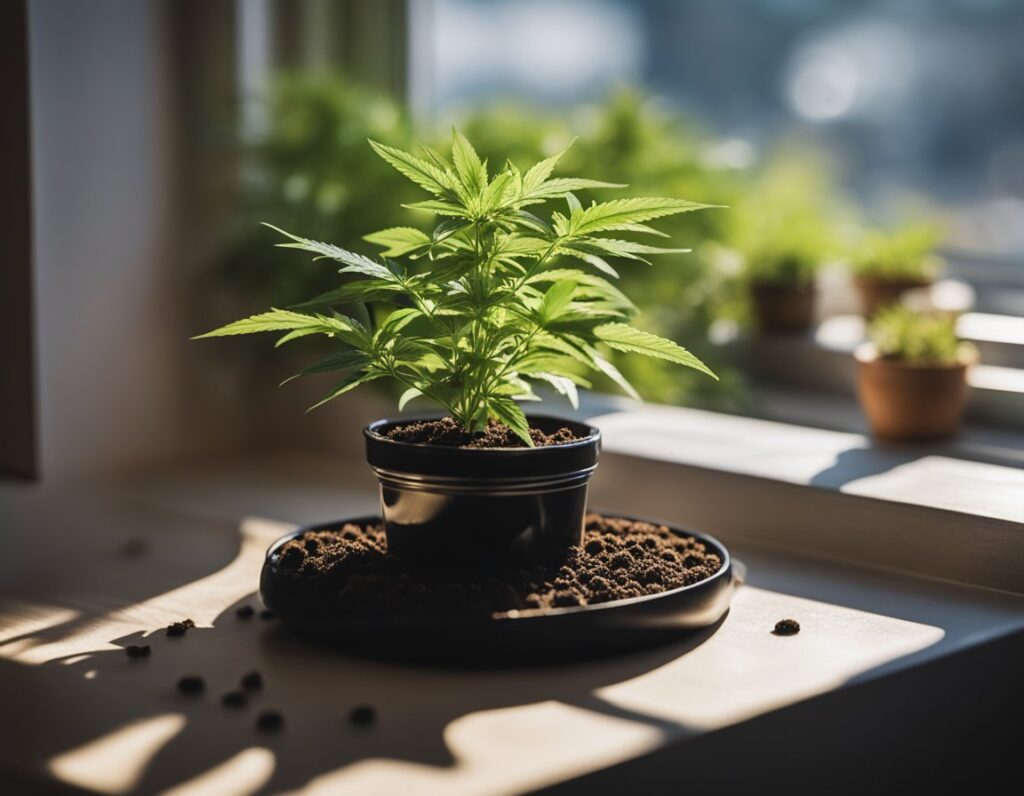
Selecting the right germination technique is crucial to ensuring the successful sprouting of your marijuana seeds. Each method offers different advantages, depending on your preferences and available resources.
This technique is popular due to its simplicity and effectiveness. Begin by moisten a paper towel with distilled water, ensuring it is damp but not soaking wet. Place your cannabis seeds spaced apart on one half of the towel. Fold the other half over the seeds, creating a pocket that retains moisture.
Next, place the towel inside a plastic bag or container to maintain humidity. Keep the setup in a warm, dark location, ideally between 70-85°F (21-29°C). Check the seeds daily for signs of germination. Typically, you should see taproots emerging within 24 to 48 hours, at which point you can transfer them to your preferred growing medium.
Rockwool cubes provide an excellent germination medium, particularly for those opting for hydroponic systems. Start by soaking the cubes in pH-balanced water (5.5-6.5 range) for 24 hours. This step aids in moisture retention and optimizes the environment for seed development.
Once the cubes are adequately soaked, carefully place your cannabis seeds into the pre-made holes in the cubes. Ensure to keep the cubes moist throughout the germination process, ideally in a humidity dome to maintain moisture levels. The environment should be kept warm for optimal results, allowing the seeds to germinate effectively within a few days. Transplanting into a larger system is straightforward once the taproot emerges.
Germinating seeds directly in soil is straightforward and effective. Choose a high-quality potting mix designed for seed germination. Moistening the soil before planting is crucial; it should be damp but not overly saturated. Make small indentations in the soil, about half an inch deep, for each seed.
Place your seeds into the grooves and softly cover them with soil. Keep the soil consistently moist, using a spray bottle to avoid oversaturating. This method relies heavily on soil health and microbial activity to aid germination. With proper moisture and warmth, seeds should sprout within a week, ready to be nurtured further.
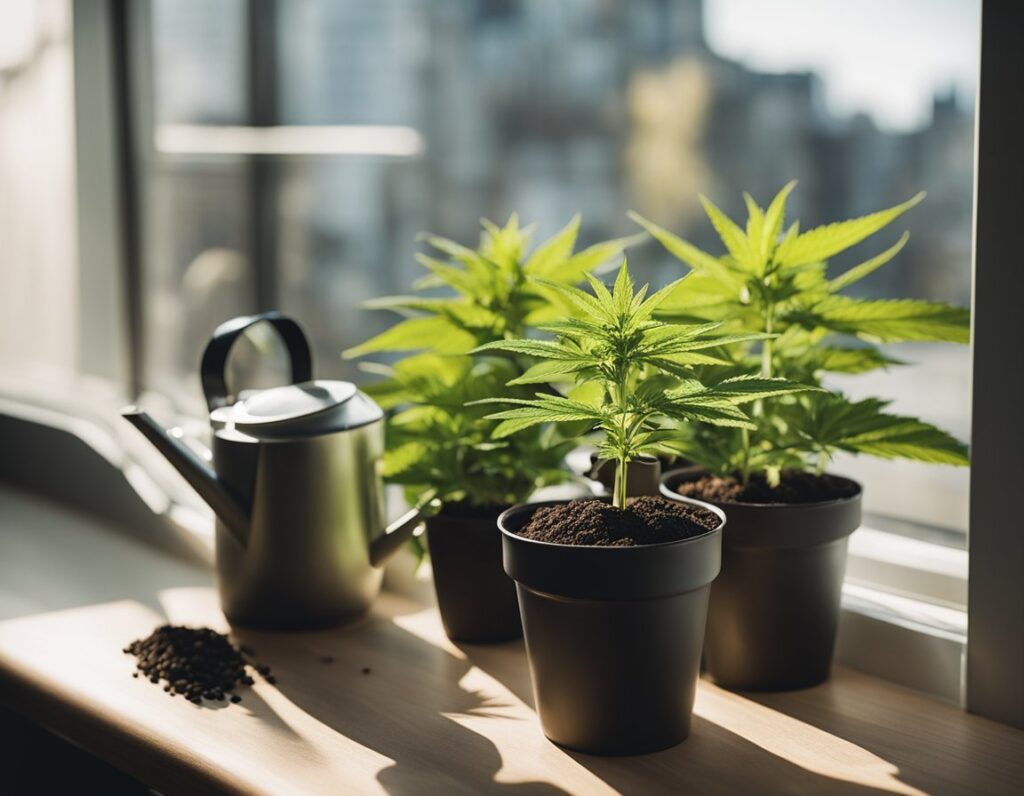
Successfully germinating marijuana seeds requires careful preparation. This includes gathering the right equipment and creating an environment that maintains optimal conditions for seed sprouting.
To begin the germination process, collect the following essential items:
Having these supplies ready will streamline your process and help ensure successful sprouting.
An optimal germination environment consists of warmth, moisture, and adequate humidity levels.
By focusing on these elements, you create the perfect conditions for your cannabis seeds to germinate.
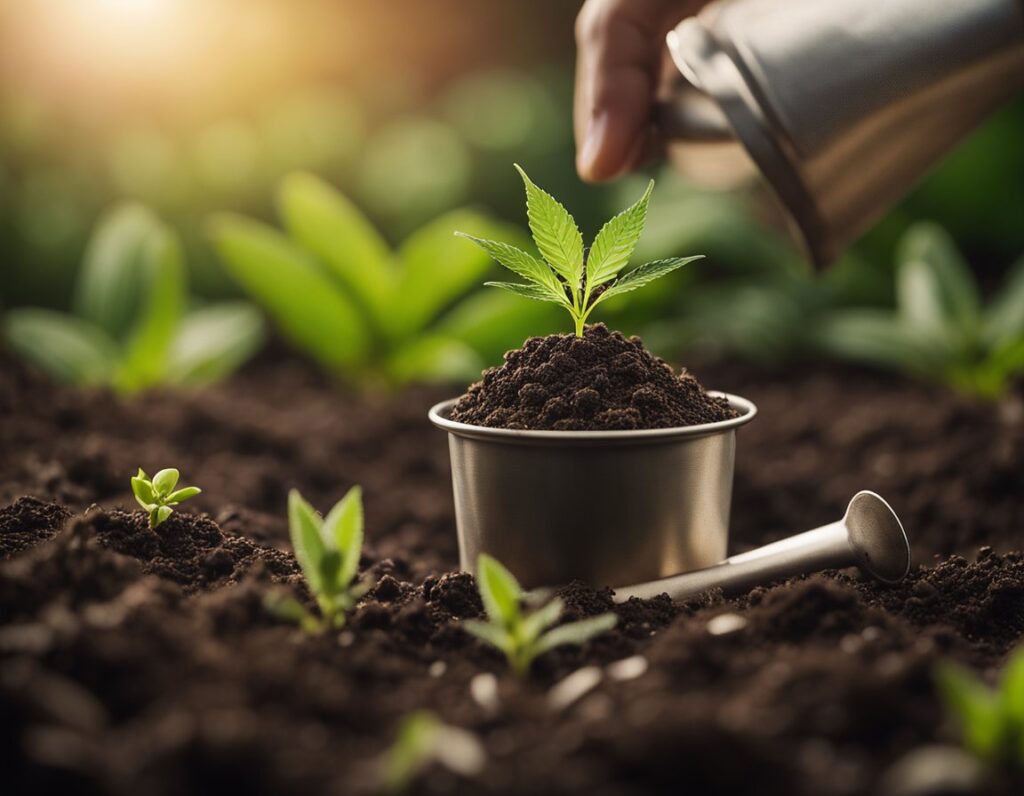
Successfully germinating marijuana seeds involves specific steps and attention to environmental conditions. The paper towel method is commonly used for its effectiveness. You’ll need to monitor moisture and temperature closely to optimize growth and identify when germination has been achieved.
Maintaining the right conditions is crucial during germination. The ideal temperature range is 70-85°F (21-29°C). This warmth ensures that your seeds have the best chance of sprouting quickly.
To maintain optimal moisture levels, check the paper towels daily. They should remain moist but not overly wet, which can cause mold. If the towels dry out, gently spray them again.
Remember, adequate oxygen is also essential for the seeds. By keeping the towels moist, you allow seeds to absorb oxygen, which promotes healthy germination.
Germination is successful when you see a small, white root emerging from the seed. This taproot typically appears within 48 hours to 7 days after starting the process.
Once the taproot is about half an inch long, the seeds are ready for planting. Handle them gently to avoid damaging the young root. If no roots appear after a week, consider checking the moisture levels or temperature.
Using this method increases your germination success rate, ensuring that more of your seeds will develop into healthy plants.

After successfully germinating your marijuana seeds, proper care is essential for their growth. Handling sprouted seeds with care and transferring them to an appropriate growing medium are critical steps in ensuring healthy development.
When your seeds begin to sprout, they will emerge with a delicate taproot. It’s important to handle them gently to avoid damage. Use clean hands or tweezers to transfer the seeds, minimizing contact with the root.
Hold the sprouted seed by the seed coat, taking care not to touch the delicate root. If you notice any moisture on the seed, it’s best to let it dry slightly to prevent mold. Always work in a clean environment to reduce the risk of contamination.
Avoid excessive light or heat during this phase, as seedlings are sensitive to high energy levels. Providing a stable environment promotes stronger seedlings.
Choosing the right growing medium is crucial for the next stage of growth. You can opt for soil or soil-less mixes like coco coir or peat. Ensure the medium is well-aerated and retains moisture without becoming waterlogged.
When transferring, dig a small hole about 1-2 inches deep in the medium. Carefully place the sprouted seed, ensuring the taproot points downwards. Lightly cover with soil, keeping the surface loose to allow for airflow.
After transplanting, provide consistent moisture while avoiding overwatering. Regularly check the medium’s moisture levels to maintain an ideal balance, fostering healthy root development.
Germinating marijuana seeds involves various effective methods, timing considerations, and specific steps to ensure success. Below are key questions that address these aspects of germination.
The paper towel method is popular for its simplicity and effectiveness. Place seeds between damp paper towels and keep them in a warm, dark environment. This method encourages germination by maintaining moisture and warmth.
In temperate climates like Vancouver, the best time to germinate seeds is typically in early spring, around March or April. This timing allows seedlings to grow during the warm, longer days of late spring and summer.
To use the water glass method, first soak your seeds in bottled spring water at room temperature for 14 to 18 hours. After soaking, transfer the seeds to a damp paper towel and place them in a semi-dark area. Ensure the paper towel remains moist throughout the process.
After the germination process starts, marijuana seeds usually sprout a taproot within 1 to 2 days. The seeds may take up to 10 days to break through the soil surface, depending on environmental factors like temperature and moisture.
While a humidity dome is not strictly necessary, it can be beneficial. Using a dome helps maintain a stable humidity level, which can promote faster germination. If you do not have a dome, regular misting can help achieve similar results.
We ship and deliver world wide via USPS and various couriers.
We offer a wide range of secure and anonymous online payment options.
We care about you, our customer. Please contact us with any questions or concerns.
Find out more about the benefits of being a loyal and regular customer.
WE ARE EVERY GROWERS ONE STOP SHOP TO ACQUIRE PREMIUM CANNABIS SEEDS FOR SALE IN THE USA, CANADA AND AUSTRALIA

Farmers Lab Seeds 2024, | All Right Reserved
Seeds are sold as novelty items, souvenirs, and collectibles. They contain 0% THC. We encourage our customers to check the legislation in their Country, State, Province, and Municipality prior to purchasing items from our store. We do not provide growing information.
All seeds are sold as hemp, and lab tested under 0.3% THC. This product is not for use by or sale to persons under the age of 21. This product should be used only as directed on the label. It should not be used if you are pregnant or nursing. Consult with a physician before use if you have a serious medical condition or use prescription medications. A Doctor’s advice should be sought before using this and any supplemental dietary product. All trademarks and copyrights are property of their respective owners and are not affiliated with nor do they endorse this product.
These statements have not been evaluated by the FDA. This product is not intended to diagnose, treat, cure or prevent any disease. Individual weight loss results will vary. By using this site, you agree to follow the Privacy Policy and all Terms & Conditions printed on this site. Void Where Prohibited by Law.